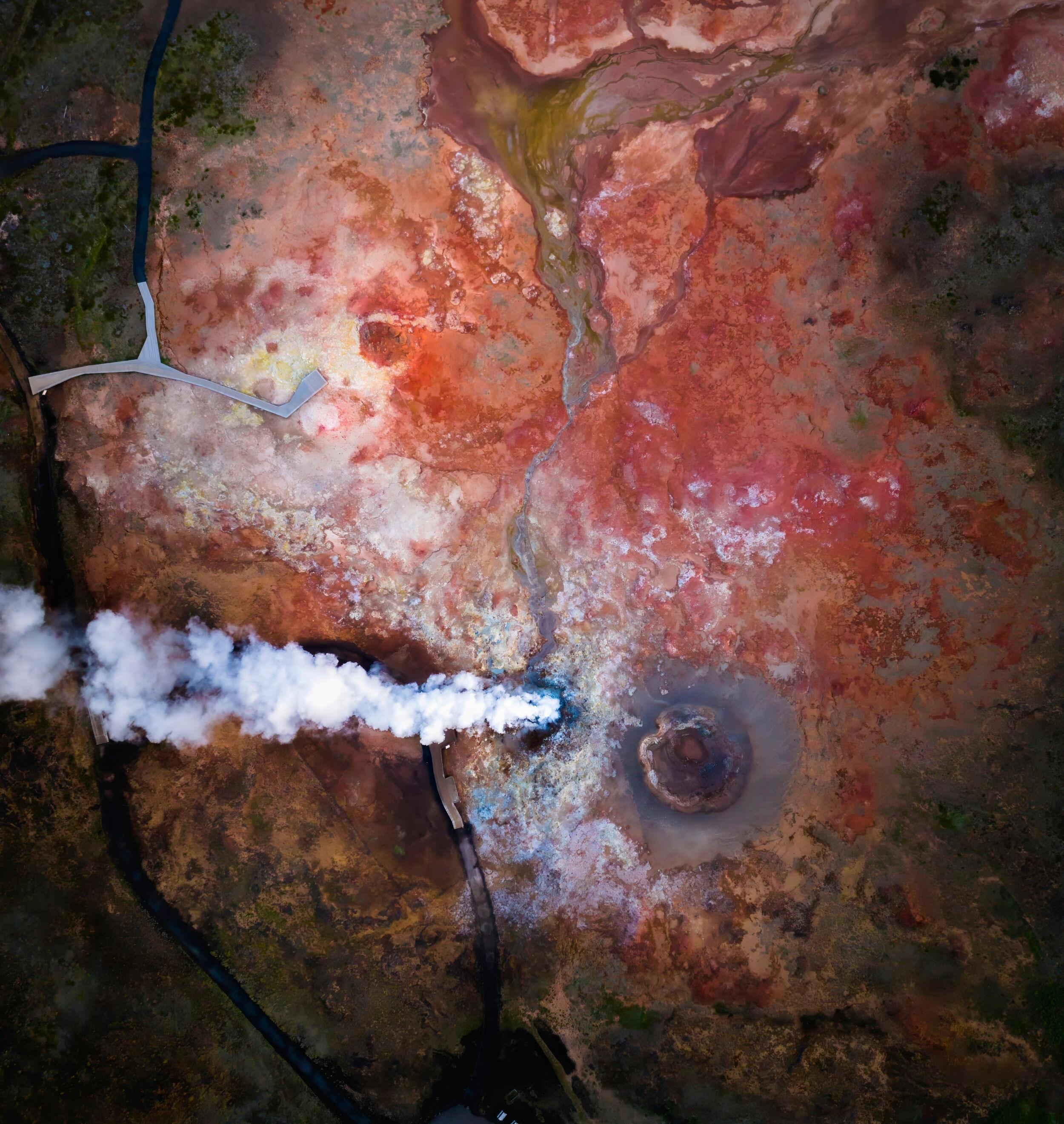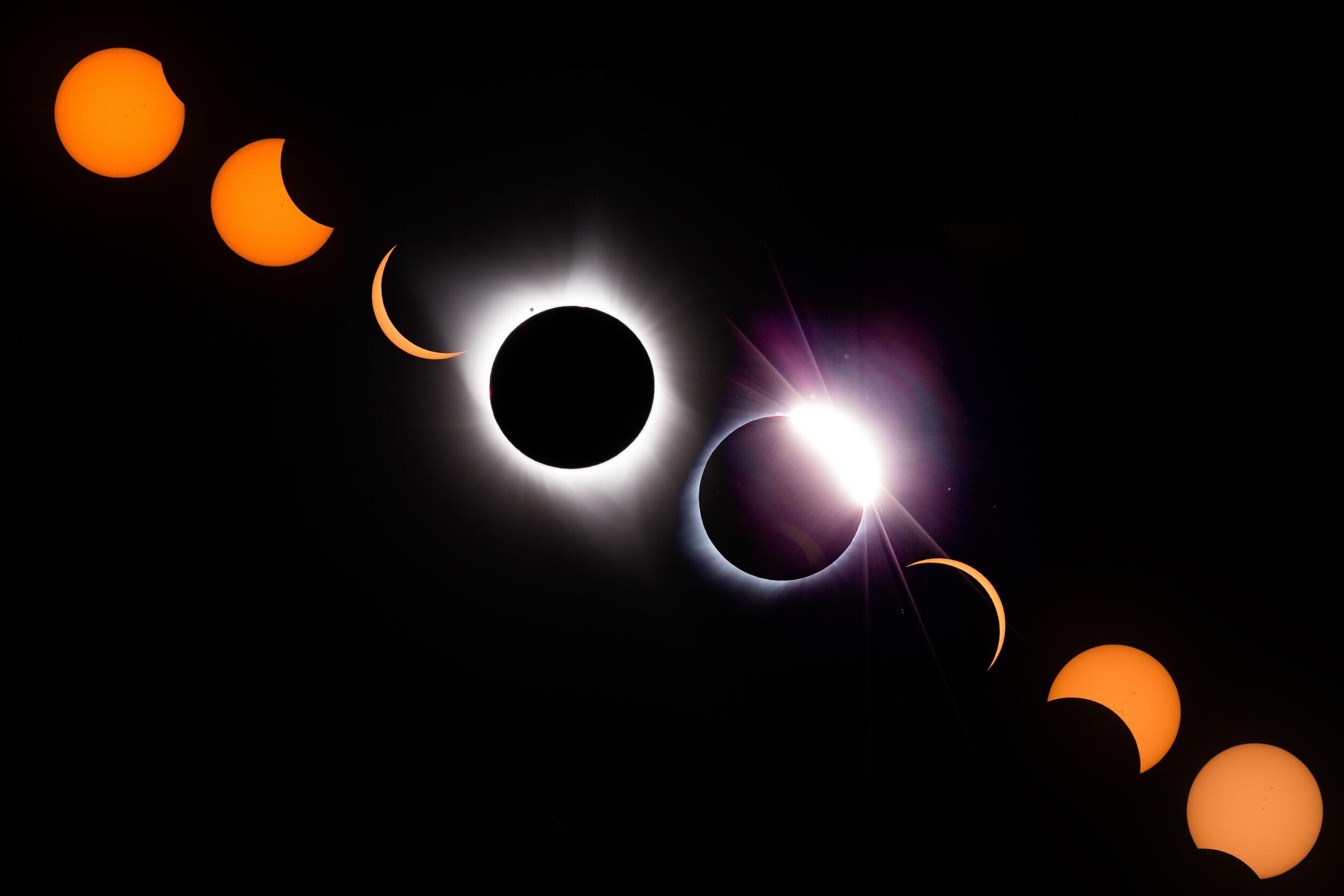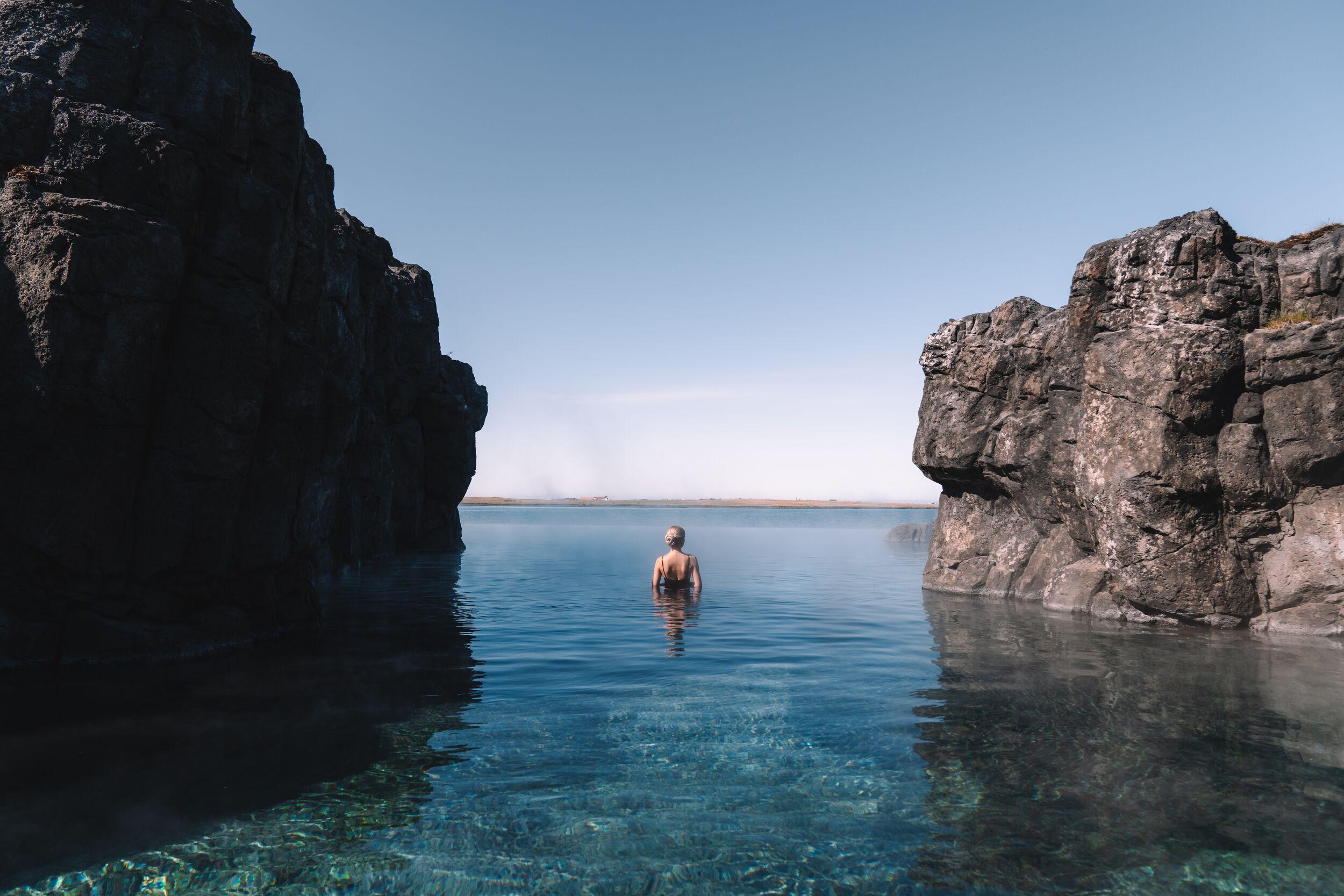
- x
- x
Visit the Reykjanes peninsula, Iceland’s most volcanically active region
What makes the Reykjanes peninsula special?
The Reykjanes peninsula is one of the most volcanically active regions on the planet. This makes Reykjanes a dynamic and fascinating place to visit. You’ll see volcanoes, lava fields, hot springs, and huge clouds of geothermal steam, as well as one of Iceland’s most famous destinations, the Blue Lagoon.
What makes the Reykjanes peninsula so special is that it sits on the Mid-Atlantic Ridge. This is a tectonic plate boundary that stretches through the centre of the Atlantic Ocean, separating the two continents, Europe and North America. These two continents—or tectonic plates—are moving apart, and the Ridge is the area in between.
It’s this tectonic movement that causes the volcanic activity on the Reykjanes peninsula. As these continents move, the ground of the peninsula fractures and lava shoots up onto the surface. These are known as fissure volcanoes, and it’s these you’ll see at Reykjanes.
The most active volcano on the Reykjanes peninsula right now is at Fagradalsfjall. This erupted in 2021, 2022, and started once more in July 2023. It’s one of the safest places in the world to see a volcanic eruption, because the lava doesn’t erupt explosively, but instead gently bubbles up onto the surface.
Some experts have said that these eruptions are likely the start of many more eruptions in the area. So, if you haven’t had the chance to see the eruption this time, there may be another opportunity in future.
This continuous volcanic activity is why Reykjanes is known as one of the youngest areas on the planet. As the tectonic plates move apart and lava emerges, new land is continually being formed.
What to see in Reykjanes
All this volcanic activity means that there’s an incredible variety of things to see and do on the Reykjanes peninsula. That’s why it’s been designated as a UNESCO Global Geopark.
One of the most famous sights in Reykjanes is of course the Fagradalsfjall volcano. With streams of lava that glow as they flow down the mountainside, it’s truly a once in a lifetime experience. If you missed the eruptions in 2021 or 2022, don’t worry. In July 2023, Fagradalsfjall erupted once more—and it’s likely to erupt again in future.
Even if it’s not erupting when you visit, you can still hike up to the viewpoint to see a breathtaking volcanic landscape. It’s an unforgettable scene. And you can make it even more compelling by joining a guided tour, led by a knowledgeable local expert.
For a different sort of volcanic experience, tour Reykjanes’s western coast. Here, the whole coast is made from solid lava, and some of the forms and shapes you’ll see are amazing.
For example, you’ll find the Brimketill rock pool, eroded by the waves. Additionally, you can visit Hafnarberg sea cliffs, a line of dramatic cliffs that are often populated by seabirds. For some of the most dramatic rock formations in the area, visit the coastline between Reykjanestá and Valahnúkamöl, on the peninsula’s south-western tip.
Close by is Reykjanesviti, the oldest lighthouse in Iceland, as well as Gunnuhver, an area of hot springs featuring steam vents and smoking mud pools. Not far from the coastline, it’s a magical spot, named after a ghost who was trapped in one of the pools.
Don’t miss the Bridge Between Continents either. It’s precisely as its name suggests—a bridge that crosses the Mid-Atlantic Ridge between continents. Where else can you say you’ve walked between Europe and America?
In this fascinating area, there’s also Seltún, a geothermal area, as well as the impressive Kleifarvatn lake.
One of Iceland’s best-known and most luxurious destinations is on the Reykjanes peninsula too. That’s the Blue Lagoon, a geothermal pool where you can bathe in warm therapeutic waters. Not only is it simply a deeply relaxing experience, but it’s powered by the same forces that cause the area’s volcanoes. It’s a great place to unwind after a day of sightseeing.
How to get there
There’s so much to see and do on the Reykjanes peninsula. All you need to do now is get there.
Luckily, Reykjanes is really conveniently located for international travellers. When you fly in, you’ll likely land at Keflavík airport, which is itself on the Reykjanes peninsula. The peninsula is only a short drive away from the centre of Reykjavík too.
At Reykjanes’s southern extreme, you’ll be 70 kilometres (43 miles) from the capital, but most of the sights are much closer than that. If you’re driving, you can leave the city and be on the peninsula within an hour. With a car, you’ll also have the benefit of going at your own pace, to explore anything that takes your interest.
What you won’t have if you drive yourself though is any local knowledge. That’s why many visitors to Reykjanes instead choose to take a guided group tour. This way, you’ll learn much more about the area through which you’re travelling, including about the processes that are so radically transforming this part of the world.
Some tours also included guided hikes to the eruption sites, offering the most compelling and safest way to witness an eruption. If the volcanoes aren’t erupting when you visit, you can still see the new rock that’s been formed.
Joining a tour with Icelandia also means that you don’t have to worry about driving. You can sit back and enjoy the view on the way to the top sights in the area. And you’ll have the chance to get to know your fellow travellers along the way.
Explore our tours to discover more.
Frequently asked questions
Grindavík is an attractive town on the south coast of the Reykjanes peninsula. It’s home to many guesthouses, campsites, and restaurants, making it a really convenient place to stay or to stop on your journey around Reykjanes.
What’s more, many of the top sights of Reykjanes can be found close by. For example, the Blue Lagoon and the Fagradalsfjall volcano are both less than 10 minutes away, while the Bridge Between Continents is less than 20 minutes away.
Reykjanes is the peninsula to the southwest of the city of Reykjavík. Its southern tip is about 70 kilometres (43 miles) from the city—and about an hour’s drive. But many of the peninsula’s main sights are much closer than that.
The main city is Reykjanesbær, the fourth-largest city in Iceland. It’s made up of the towns of Keflavík and Njarðvík.
There are regular volcanic eruptions on the Reykjanes peninsula. This is because it sits on the Mid-Atlantic Ridge, which makes the region one of the most volcanically active areas in the world.
The Mid-Atlantic Ridge is a tectonic boundary where two continents are moving apart. Imagine that the whole of Europe is moving away from North America, and in the gap between these two tectonic plates lots of volcanoes are to be found.
This is exactly what’s happening at Reykjanes.
There are few places in the world that are as volcanically active as the Reykjanes peninsula. It’s been designated a UNESCO Global Geopark precisely because of its international importance.
Even if you’re not a geology buff, it still makes for a breathtaking experience. When volcanoes in the area erupt, it’s one of the safest places on the planet to see real lava. And when it’s not erupting, you can explore the fascinating landforms that these volcanoes have left behind.
Reykjanes is a perfectly safe area to visit. In fact, it’s recognised as one of the safest places to see volcanoes on the planet. Just make sure you bring some sturdy shoes and a rain jacket, just in case.
In 2021, 2022, and 2023, volcanoes on the Reykjanes peninsula have erupted. In 2023, the eruption occurred close to the Litli-Hrútur hill, just north of the previous Fagradalsfjall eruption sites. You could see fresh lava bubbling up and flowing down the side of a crater.
Eruptions in the area are really common, due to the very active volcanic systems on the Reykjanes peninsula. That’s why it’s been designated as a UNESCO Global Geopark.
The Reykjanes UNESCO Global Geopark designates much of the Reykjanes peninsula. Most significantly, the Geopark includes the area around Fagradalsfjall and the Geldingadalir volcano, to the northeast of the town of Grindavík.
The word Reykjanes is very similar to the word Reykjavík, but it swaps the last syllable “vík” for “nes”. Pronounce that final syllable how you would pronounce the last syllable of the English word “happiness”.
So, there are three syllables in Reykjanes, and the emphasis comes on the first.
The Reykjanes peninsula is one of the youngest areas of Iceland. That’s because it’s also one of the most geothermically active. Thanks to the Mid-Atlantic Ridge which passes through the area, new land is always being formed.
So, Reykjanes is likely to be as old as 6 or 7 million years old. Given that the rest of Iceland was formed over 20 million years ago, Reykjanes is really pretty young.
The Reykjanes Ridge is a part of the Mid-Atlantic Ridge, which stretches all the way south through the Atlantic Ocean. The Reykjanes peninsula is a continuation of the Reykjanes Ridge, but while the peninsula is above sea level, the Ridge is below the water.
The Mid-Atlantic Ridge can reach depths of 2.5 kilometres. But closer to Iceland, the Reykjanes Ridge is only about 300 metres (980 feet) below sea level.
Most volcanoes on the Reykjanes peninsula are fissure volcanoes. These aren’t the classic cone-shaped mountains that erupt in huge explosions of ash (although you can see one of those, Keilir, on the Reykjanes peninsula). Rather, fissure volcanoes are those where lava emerges from cracks or fissures in the ground.
As a result, their eruptions tend to be much more gentle. That’s why you can get quite close to the eruptions at Fagradalsfjall.
Keflavík is best known as the location of Iceland’s main international airport. However, it’s a pleasant town in its own right and a convenient place from which to explore the Reykjanes peninsula.
In Keflavík itself, you’ll find the Icelandic Museum of Rock ‘n’ Roll, for example, as well as the Viking World museum, home to a replica of a Viking ship.
The latest eruption in Reykjanes was seen in July 2023. This is another episode of a long period of activity in the Fagradalsfjall volcano system. The system has erupted three years in a row, in 2021, 2022, and 2023, most recently close to the Litli-Hrútur hill.
Even without a live eruption, the area makes for an incredible sight. Plus, it’s one of the safest places in the world to see an active volcano.
In July 2023, Fagradalsfjall began to erupt again for about three weeks. This area of activity was a couple of kilometres away from the eruptions of 2021 and 2022.
The volcano is no longer erupting. But in such a volcanically active area, the chances are that it won’t be long before the next one.
The name Reykjanes translates in English to “steam peninsula”. Even its name refers to its volcanic activity!
Related tours

Iceland in Totality: 6-Day Adventure Tour with 2026 Solar Eclipse
A once-in-a-lifetime opportunity to join a 6-day guided hiking tour including a total solar eclipse in Iceland.

Volcanic Wonders with Grindavík Visit & the Sky Lagoon
Discover Iceland’s geothermal heart in the UNESCO-recognized Reykjanes Geopark, where continents meet and drift apart. Explore a vibrant geothermal area, hike to freshly-formed lava fields, and visit the resilient fishing village of Grindavík. This carbon-neutral journey ends with pure relaxation at Reykjavík’s Sky Lagoon, where you can soak in warm waters and unwind with a luxurious spa ritual.

